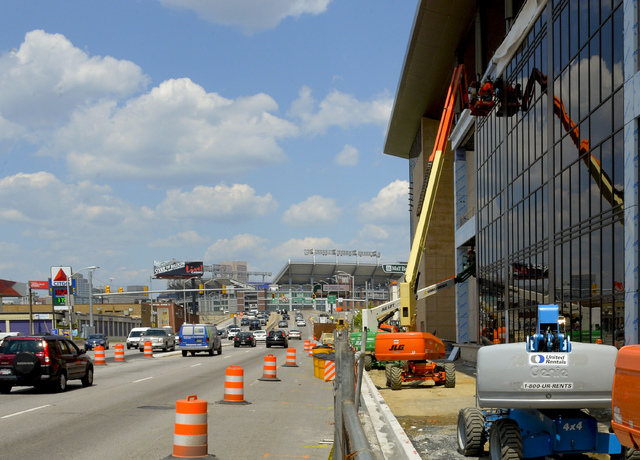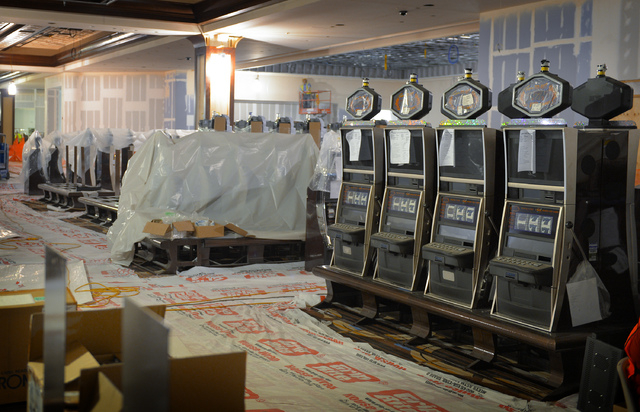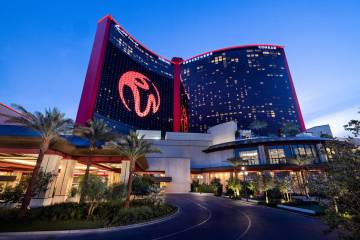For revitalizing cities it’s the gaming – and a lot more
BALTIMORE
Chad Barnhill carefully maneuvered visitors through an active construction site Monday that is quickly becoming the $442 million Horseshoe Casino Baltimore.
He paused in front of floor-to-ceiling windows on the second floor.
In clear view was M&T Bank Stadium, home of the National Football League’s Baltimore Ravens, seemingly as close as a couple of Joe Flacco passes. The windows open onto an outdoor patio and are part of the 222-seat Johnny Sánchez restaurant, a collaboration between celebrity chefs John Besh and Aarón Sánchez.
On the first floor, a similar setup awaits diners to Guy Fieri’s Baltimore Kitchen &Bar, a 350-seat offering.
On a pleasant fall afternoon game day, the windows in both spaces will be able to open, allowing guests to hear sounds emanating from the stadium.
The Horseshoe includes “Baltimore Marketplace,” with outlets of the city’s best restaurants.
Barnhill envisions the Horseshoe as a natural stop for Ravens pre- and postgame celebrations.
The same should hold true during baseball season. Camden Yards, home of the Baltimore Orioles, is on the other side of the football stadium.
Don’t misunderstand. Gaming is an important aspect of the Horseshoe Baltimore.
The 122,000-square-foot casino will have 2,500 video lottery terminals, 100 table games, and a 25-table World Series of Poker-branded poker room.
But Barnhill, the Horseshoe Casino’s general manager, wants it understood the project is a full-scale entertainment attraction, designed to bring new life and vitality to downtown Baltimore’s south end when it opens this fall.
“There will be excitement and energy,” Barnhill said of the Horseshoe, a joint venture of Caesars Entertainment Corp. and Rock Gaming.
He has a road map to follow.
In 2012 and 2013, Caesars and Rock opened similar Horseshoe casinos in Cincinnati and Cleveland, spending millions to help revitalize similar neighborhoods. Barnhill said Horseshoe Cleveland attracted 5 million visitors its first year. The same projection has been made for the Baltimore project.
Other major U.S. cities — Philadelphia, Detroit, Boston — have used tax dollars associated with gaming, or are considering gaming itself, as a means of economic development.
“We think politicians will remain enticed by the possibility that a new casino project can create economic investment, jobs and tax revenues for their local community,” Credit Suisse gaming analyst Joel Simkins said.
Horseshoe Baltimore has employed about 2,000 construction workers in the past year and is expected to hire 1,700 to 1,900 full- and part-time employees.
The casino will pay Maryland’s 61 percent tax on gaming revenue from slot machines and a 20 percent tax on table game revenue. Baltimore will also excise an additional 3 percent tax on gaming revenue for leasing city-owned land.
But that’s just part of the story.
Maryland charges a 6 percent tax on restaurant meals and a 9 percent tax on alcohol sales.
Dominick Murray, secretary of Maryland’s Business and Economic Development Department, said gaming is just part of the state’s business expansion.
Tax dollars from casinos have been used to spur small-business development and improve communities, which has led to other industries, such as cybersecurity technology and bioresearch, moving to Maryland, Murray said.
Maryland has six casino licenses. When MGM Resorts International opens a $1 billion hotel-casino development in National Harbor near Washington, D.C., in 2016, the state’s gaming expansion will be complete.
Analysts said other states will follow, but they also won’t be surprised if activity tails off.
“As cities pursue urban renewal programs, downtown casinos could benefit from greater visitation in the future,” Wells Fargo Securities gaming analyst Dennis Farrell Jr. said.
But except for Detroit, most urban casino developments have underperformed expectations.
In Baltimore, don’t expect the Horseshoe to replace the famed Inner Harbor as the city’s top tourist attraction.
Farrell said gamblers seem to prefer suburban environments.
Maryland Live!, the state’s largest casino, has 4,300 slot machines, 177 table games and a 52-table poker room on a 250,000-square-foot floor. The property is adjacent to the Arundel Mills Mall in Anne Arundel County, 15 miles from downtown Baltimore.
In 2013, Maryland Live!, owned by the Cordish Cos., produced almost $600 million in gaming revenue. Through April, revenue is up almost 36 percent. Cordish President Joe Weinberg said the property contributes, on average, $1 million per day in tax revenue to the state.
Despite the numbers, Simkins said the changing economic outlook could slow gaming expansion.
“With the U.S. economy on firmer footing and potentially gaining momentum through the remainder of the decade,” Simkins said. “The need for casinos as a means to stimulate revitalization could lose momentum in many untapped markets.”
Howard Stutz’s Inside Gaming column appears Wednesdays and Sundays. He can be reached at hstutz@reviewjournal.com or 702-477-3871. Follow on Twitter: @howardstutz.


















